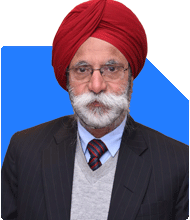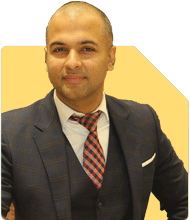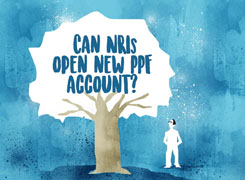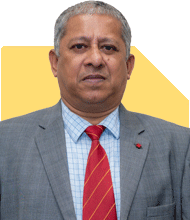Is my Mutual Fund Investment Strategy Sound?
Ramalingam Kalirajan |8204 Answers |Ask -Follow
Mutual Funds, Financial Planning Expert - Answered on Aug 20, 2024
He has an MBA in finance from the University of Madras and is a certified financial planner.
He is the director and chief financial planner at Holistic Investment, a Chennai-based firm that offers financial planning and wealth management advice.... more

Hi sir, I am 30 year old, I am investing mutual fund 10 k , 1. Icici blue chip 2.5 k 2. Uti small cap 2.5 k 3. Zerodha large & mid cap 2.5k 4. Tata auto intex 2.5 k 5. Navi nifty index 2.5 k Kindly suggest is that correct
Diversification: A Key to Risk Management
Diversification is crucial in managing investment risk. Your portfolio includes large-cap, mid-cap, small-cap, sectoral, and index funds. While this spread is commendable, it's essential to ensure that your diversification is effective and not just a collection of funds.
Large-Cap and Blue Chip Funds: These are stable and less volatile, offering consistent returns over time. Your investment in a blue-chip fund provides a strong foundation.
Small-Cap Funds: These can offer high returns but come with higher risk. It’s wise to limit exposure to small-cap funds to avoid significant volatility.
Large & Mid-Cap Funds: These funds aim to provide a mix of stability and growth. Your investment here is balanced, but it's important to monitor performance regularly.
Sectoral Funds: Investing in a sectoral fund like Tata Auto Index can be risky as it’s tied to the performance of a specific industry. This makes it more volatile. Sectoral funds should only be a small portion of your portfolio.
Index Funds: While index funds track market indices and offer low-cost investing, they lack active management. This means they may not outperform the market, especially in fluctuating conditions. Actively managed funds can provide better opportunities for higher returns with the guidance of a Certified Financial Planner (CFP).
The Disadvantages of Index Funds
Index funds, like your investment in the Navi Nifty Index Fund, are designed to replicate the performance of an index. This approach can have limitations:
Limited Upside Potential: Index funds will never outperform the index they track. They merely mirror the index’s performance, both in ups and downs.
No Active Management: In volatile markets, active management can make a significant difference. Actively managed funds allow fund managers to make decisions based on market conditions, potentially offering better returns.
Lack of Flexibility: Index funds don’t have the flexibility to shift between stocks or sectors, which might be necessary during market downturns or shifts.
Given these points, actively managed funds may offer better growth potential with lower risk when selected and monitored by a CFP.
The Drawbacks of Direct Funds
Direct funds might seem appealing due to lower costs. However, they come with their own set of challenges:
Lack of Professional Guidance: When investing in direct funds, you miss out on professional advice and ongoing monitoring. A Certified Financial Planner can help you make informed decisions and adjust your portfolio as needed.
Higher Risk: Without expert advice, there’s a higher risk of making investment mistakes, especially in volatile markets. Regular funds managed through a CFP provide personalized guidance and portfolio reviews.
Time and Effort: Managing direct funds requires time and financial knowledge. If you’re not an experienced investor, this can be overwhelming.
For these reasons, investing through a CFP who can manage your investments effectively is often more beneficial.
Rebalancing Your Portfolio
To optimize your investment strategy, consider the following adjustments:
Reduce Sectoral Fund Exposure: Consider reducing your investment in the Tata Auto Index fund. Sectoral funds are highly volatile and can lead to substantial losses if the sector underperforms. You might want to reallocate this portion to more diversified funds.
Focus on Actively Managed Funds: Consider shifting your investment from the Navi Nifty Index Fund to an actively managed fund. This can offer better returns with professional management.
Limit Small-Cap Exposure: While small-cap funds offer growth potential, they also come with higher risk. Ensure that your exposure to small-cap funds aligns with your risk tolerance and financial goals.
Long-Term Investment Strategy
Your current age and investment horizon are significant factors. At 30 years old, you have a long investment horizon, allowing you to take some risks. However, it’s essential to balance these risks with more stable investments.
Consider SIPs in Large-Cap and Flexi-Cap Funds: These funds offer stability with growth potential, making them ideal for long-term investments.
Stay Invested for the Long Haul: The key to successful investing is consistency. Continue with your SIPs and stay invested for the long term to benefit from compounding returns.
Periodic Review: Regularly review your portfolio with the help of a CFP to ensure it remains aligned with your goals. Market conditions change, and so should your investment strategy.
The Importance of Certified Financial Planning
Working with a Certified Financial Planner is crucial for achieving your financial goals. A CFP can provide personalized advice, helping you make informed decisions and adjust your portfolio based on your financial situation, goals, and risk tolerance.
Tailored Advice: A CFP can create a customized investment strategy that aligns with your long-term goals.
Ongoing Monitoring: Regular reviews and adjustments ensure that your portfolio stays on track, even in changing market conditions.
Risk Management: A CFP helps you balance risk and reward, ensuring your investments are diversified and aligned with your risk tolerance.
Finally
Your current investment strategy shows a good start, but some adjustments can optimize your portfolio. By reducing sectoral exposure, focusing on actively managed funds, and working with a Certified Financial Planner, you can enhance your investment strategy. Remember, the key to successful investing is consistency, diversification, and regular portfolio reviews.
Stay focused on your long-term goals, and keep investing wisely.
Best Regards,
K. Ramalingam, MBA, CFP,
Chief Financial Planner,
www.holisticinvestment.in
You may like to see similar questions and answers below
Hemant Bokil | Answer |Ask -Follow
Financial Planner - Answered on Apr 27, 2023
Ramalingam Kalirajan |8204 Answers |Ask -Follow
Mutual Funds, Financial Planning Expert - Answered on Apr 15, 2024
Ramalingam Kalirajan |8204 Answers |Ask -Follow
Mutual Funds, Financial Planning Expert - Answered on Dec 16, 2024
T S Khurana |437 Answers |Ask -Follow
Tax Expert - Answered on Apr 08, 2025
Mihir Tanna |1043 Answers |Ask -Follow
Tax Expert - Answered on Apr 08, 2025
Harsh Bharwani |79 Answers |Ask -Follow
Entrepreneurship Expert - Answered on Apr 08, 2025
Milind Vadjikar |1157 Answers |Ask -Follow
Insurance, Stocks, MF, PF Expert - Answered on Apr 08, 2025
Milind Vadjikar |1157 Answers |Ask -Follow
Insurance, Stocks, MF, PF Expert - Answered on Apr 08, 2025
Milind Vadjikar |1157 Answers |Ask -Follow
Insurance, Stocks, MF, PF Expert - Answered on Apr 08, 2025
Milind Vadjikar |1157 Answers |Ask -Follow
Insurance, Stocks, MF, PF Expert - Answered on Apr 08, 2025
Ramalingam Kalirajan |8204 Answers |Ask -Follow
Mutual Funds, Financial Planning Expert - Answered on Apr 08, 2025
Prof Suvasish Mukhopadhyay |557 Answers |Ask -Follow
Career Counsellor - Answered on Apr 08, 2025
Inderpaul Singh |53 Answers |Ask -Follow
Leadership Coach - Answered on Apr 08, 2025






















.jpg)



